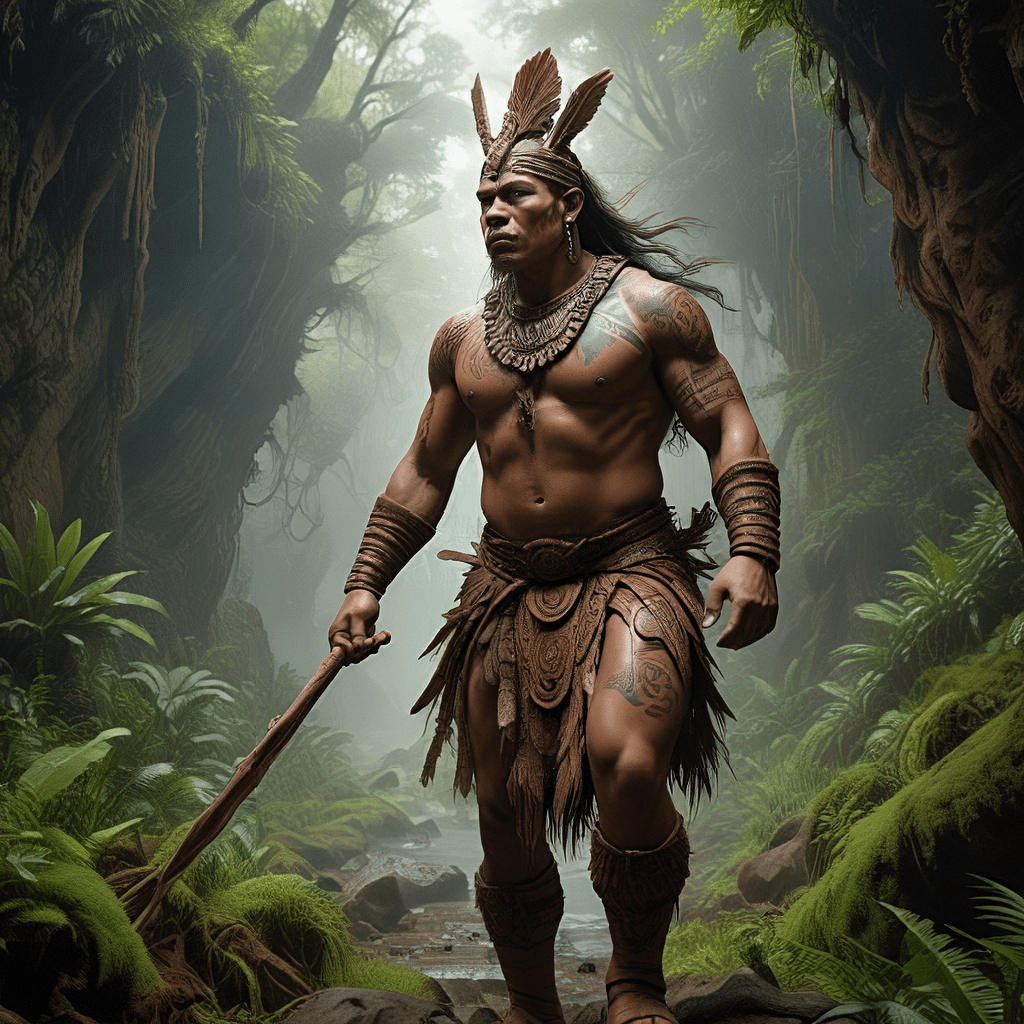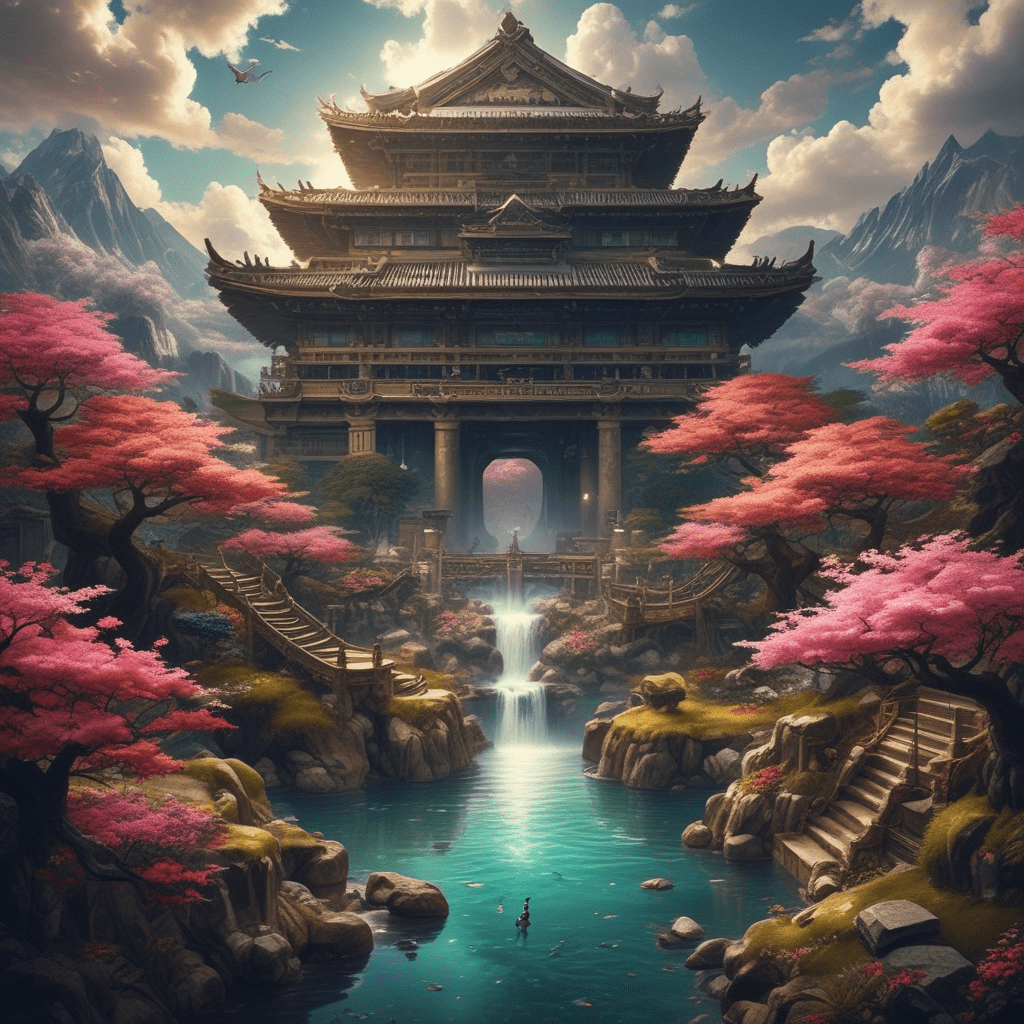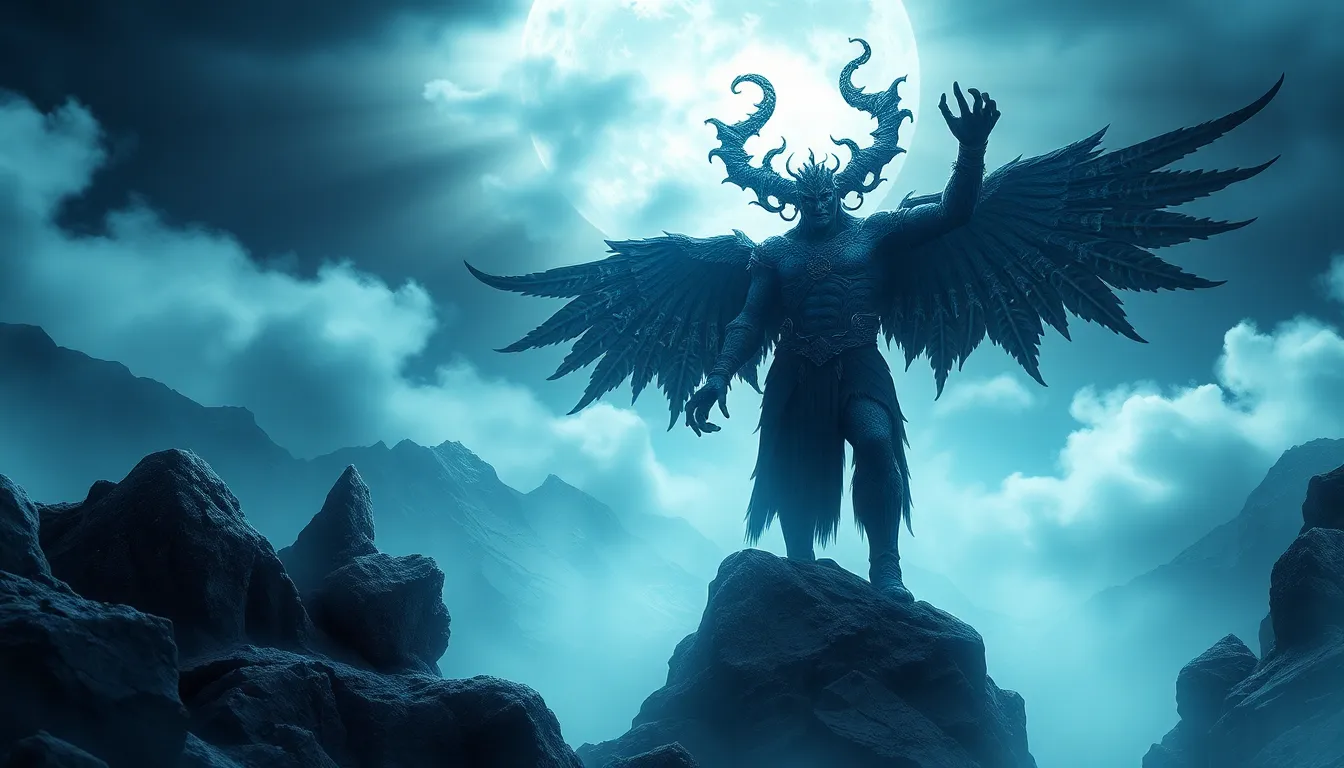The Realm of Spirits: A Tapestry of Maori Mythology
The Maori people of New Zealand have a rich and complex mythology, steeped in stories of creation, gods, and the spirit world. The Maori believe that the world is alive with spirits, both benevolent and malevolent, who influence all aspects of life, from the weather to the success of a harvest. And at the heart of this belief system lies the underworld, a realm known as Te Reinga, where the spirits of the dead reside.
Te Reinga isn't a place of eternal darkness or torment, as it is often depicted in Western mythology. Instead, it's seen as a continuation of life, a place where the spirits of the ancestors live on, connected to the living world through a web of ancestral ties. This realm is a vibrant tapestry where stories of creation, journeys of the soul, and relationships between the living and the dead intertwine, forming the foundation of Maori cultural identity.
Te Kore: The Void of Creation and the Birth of the Underworld
The Maori creation myth begins in Te Kore, a state of nothingness, where the primordial god, Io, existed alone. This void represented a state of potential, a blank canvas waiting to be filled with life. From Te Kore, Io created the universe, shaping the land, the sky, and the sea. It is from this act of creation that the concept of Te Reinga, the underworld, emerges.
Te Reinga is not a separate realm entirely but rather an extension of the world of the living, connected to it through a series of pathways and portals. The journey to Te Reinga is considered a natural part of the life cycle, a transition from the physical realm to the spiritual one. This transition is not seen as death in the Western sense, but rather a transformation, a change in form and existence.
The Journey to Te Reinga: The Gateway to the Afterlife
The journey to Te Reinga is a symbolic one, often depicted as a perilous passage through the underworld, filled with challenges and obstacles. The most famous gateway to this realm is at the northern tip of the North Island, at a place called Te Reinga, which translates to "the leaping place." Here, the spirits of the dead are believed to take a final leap from the cliffs into the sea, embarking on their journey to the afterlife.
The journey itself is a reflection of the Maori belief in the interconnectedness of all things. The land, the sea, and the sky all play a role in this passage, symbolizing the different stages of life and the cycle of death and rebirth. The spirits are guided by the ancestors, who act as their protectors and guides on this final journey.
Rongomai: The God of Death and the Guardian of the Underworld
Rongomai is a powerful deity in Maori mythology, often referred to as the "god of death." However, Rongomai is not a malevolent figure; rather, he's the guardian of the underworld, ensuring balance and order in the realm of spirits. Rongomai is responsible for overseeing the transition of souls from the physical world to the spiritual one, ensuring a smooth passage for those embarking on this journey.
He is also believed to be the source of knowledge about the afterlife and the ways of the spirit world. His presence is felt in the rituals and ceremonies that mark the death of a loved one, providing comfort and guidance to the bereaved. Rongomai's role as the guardian of Te Reinga highlights the importance of respect and reverence for the dead in Maori culture.
The Hau: Spirits of the Ancestors and their Influence on the Living
The hau, or spirits of the ancestors, are a vital presence in Maori mythology. They are not simply ghosts or ethereal beings, but rather the living embodiment of ancestral knowledge, wisdom, and power. The hau are believed to be connected to the living world, influencing events, providing guidance, and protecting their descendants.
They are also seen as guardians of the land, ensuring its fertility and abundance. The hau are invoked in rituals and ceremonies, their presence sought for guidance and support. The relationship between the living and the hau is a complex one, balancing respect and reverence with a recognition of the ancestral influence on daily life.
The Whenua: The Sacred Earth and the Connection to the Underworld
The Maori believe that the earth, known as Whenua, is a living entity, a sacred space that connects the living world to the realm of spirits. This connection is deeply ingrained in their understanding of the afterlife, as Te Reinga, the underworld, is not seen as a separate place, but rather an extension of the Whenua.
The land holds the memories and stories of ancestors, and their spirits continue to reside within it, nurturing and protecting those who walk its paths. Every mountain, river, and forest holds a powerful connection to the spirit world, reflecting the ancestral presence that shapes the landscape.
This connection is evident in the Maori practice of burying their deceased in the earth, returning their bodies to the source from which they came. This act symbolizes the cyclical nature of life and death, a continuous flow between the physical world and the spiritual realm.
The Whenua is a sacred space where the spirits of the ancestors live on, influencing the living through its fertile soil, abundant resources, and the echoes of ancestral wisdom that resonate within its depths.
The Role of Whakapapa: Ancestry and the Tapestry of Life and Death
Whakapapa, the Maori concept of genealogy, plays a crucial role in understanding the relationship between the living and the dead. It's not simply a list of names and dates, but a tapestry that weaves together the past, present, and future, connecting each individual to their ancestors and their place in the wider community.
Whakapapa recognizes the lineage that flows through generations, connecting the living to the spirits of the deceased and their influence on the present. It's through this understanding of ancestry that individuals find their place in the world, understanding their responsibilities and obligations to the generations that came before them.
The journey to Te Reinga is seen as a continuation of this lineage, a transition from the physical world to the spiritual realm, where the spirits of the ancestors reside. It's a journey of transformation, where the individual transcends their physical form and becomes part of the collective ancestral spirit, contributing to the ongoing tapestry of life and death.
Whakapapa is the foundation of Maori cultural identity, shaping their values, beliefs, and understanding of the world.
The Kaitiaki: Guardians of the Underworld and their Sacred Duties
The Kaitiaki are guardians, protectors, and caretakers of sacred places and ancestral knowledge. In the context of the underworld, they play a crucial role in maintaining balance and order within the realm of spirits, ensuring the smooth transition of souls to Te Reinga and the protection of ancestral knowledge.
They act as intermediaries between the living and the dead, fulfilling a sacred duty to uphold the traditions and values that bind generations together. These responsibilities include performing rituals and ceremonies, offering guidance to the bereaved, and protecting the sacred places that are connected to Te Reinga.
Their knowledge of the underworld and its paths is crucial for ensuring the well-being of the living and the spirits of the ancestors. They are the keepers of ancestral wisdom, ensuring its preservation and transmission to future generations.
The Kaitiaki are respected figures within Maori communities, their wisdom and knowledge serving as a bridge between the physical world and the realm of spirits.
The Power of Tapu: Taboo and its Relationship to the Spirit World
Tapu is a concept central to Maori culture, representing a sacredness or restriction, a sense of spiritual power that can be dangerous if not respected. It's a powerful force that governs the relationship between the living and the spirit world, influencing rituals, ceremonies, and daily life.
Certain places, objects, and people are considered tapu, imbued with ancestral power and requiring specific protocols and behaviors. Violating these rules can lead to misfortune or illness, as it disrupts the sacred balance between the living and the dead.
Tapu is also closely connected to the underworld, as the realm of spirits is believed to be a tapu space, demanding respect and reverence. The journey to Te Reinga itself is considered tapu, with specific rituals and offerings required to ensure a safe passage for the spirits of the deceased.
Understanding the concept of tapu is crucial for navigating the spiritual world, respecting the power of the ancestors and ensuring harmony in the relationship between the living and the dead.
Navigating the Underworld: Rituals, Offerings, and the Legacy of Ancestral Knowledge
Navigating the underworld in Maori mythology involves a deep understanding of ancestral knowledge, rituals, and offerings. The journey to Te Reinga is not simply a physical one, but a spiritual transformation guided by ancestral wisdom and traditions.
Rituals and ceremonies play a vital role in bridging the gap between the living and the dead, honoring the spirits of the ancestors and ensuring a smooth passage for those embarking on their journey to Te Reinga. These practices involve specific chants, songs, dances, and offerings designed to appease the spirits and guide them safely to their final destination.
The legacy of ancestral knowledge is passed down through generations, shaping the rituals and ceremonies that guide the living in their interactions with the spirit world. This knowledge teaches the importance of respect, reverence, and understanding in navigating the realms of the dead, ensuring a harmonious relationship between the living and the ancestors.
The underworld in Maori mythology is not a place of fear or punishment, but rather a continuation of life, a realm where the spirits of the ancestors live on, providing guidance and protection to their descendants. By understanding their rituals, offerings, and the legacy of their ancestral knowledge, we can learn to navigate this complex world with respect and reverence.
Frequently Asked Questions (FAQ):
Q: Where is Te Reinga located?
A: Te Reinga, the gateway to the Maori underworld, is located at the northern tip of New Zealand's North Island, at a place known as Cape Reinga. It is a sacred site in Maori tradition, marking the place where the spirits of the dead are believed to leap into the sea and begin their journey to the afterlife.
Q: What happens to the spirits in Te Reinga?
A: In Maori mythology, Te Reinga is not a place of eternal darkness or torment. Instead, it's seen as a continuation of life, where the spirits of the ancestors live on, connected to the living world through a web of ancestral ties. They reside in a vibrant realm, living, learning, and continuing their journey in the spirit world.
Q: Do the spirits of the dead ever return to the living world?
A: The Maori believe that the spirits of the ancestors can return to the living world, often through dreams or visions. The hau, or spirits of the ancestors, are believed to be connected to the living world and can influence events, provide guidance, or offer protection to their descendants.
Q: How do rituals and offerings help in navigating the underworld?
A: Rituals and offerings are crucial in navigating the underworld, as they serve as a way to communicate with the spirits of the ancestors and ensure a smooth passage for those embarking on their journey to Te Reinga. These practices are guided by ancestral knowledge and traditions, offering a bridge between the living and the dead.
Q: Why is the concept of tapu important in understanding the spirit world?
A: Tapu is a crucial concept in understanding the relationship between the living and the spirit world. It emphasizes the sacredness of certain places, objects, and people, requiring specific protocols and behaviors to avoid disrupting the balance between the physical and spiritual realms.
Q: What can we learn from Maori mythology about death and the afterlife?
A: Maori mythology offers a unique perspective on death and the afterlife, emphasizing a continuation of life in the spirit world, a strong connection between the living and the dead, and the importance of honoring and respecting the ancestors. Their beliefs highlight the interconnectedness of life and death, encouraging a reverence for the past and a sense of responsibility to future generations.




